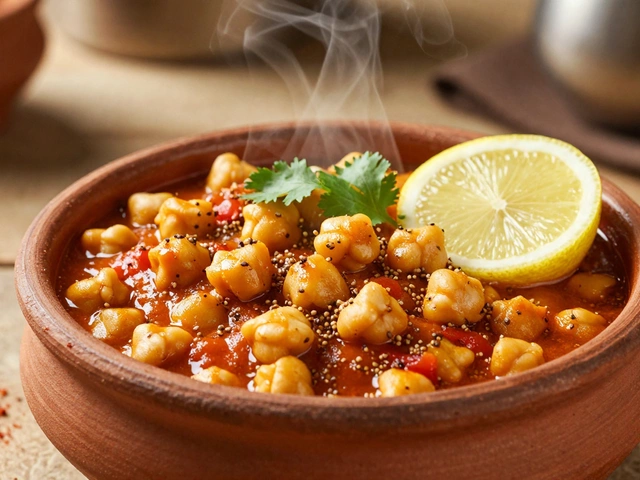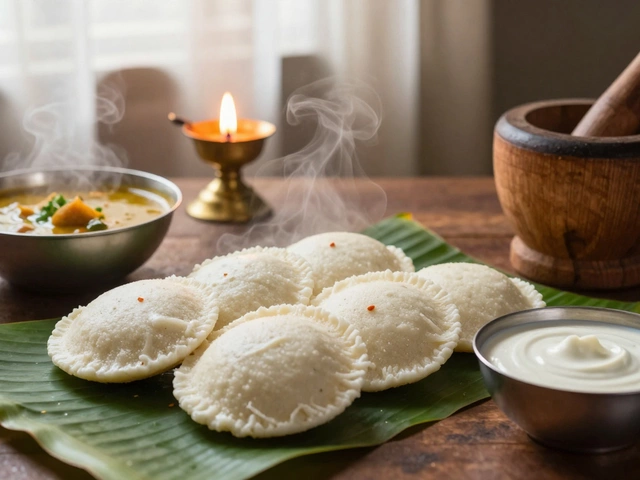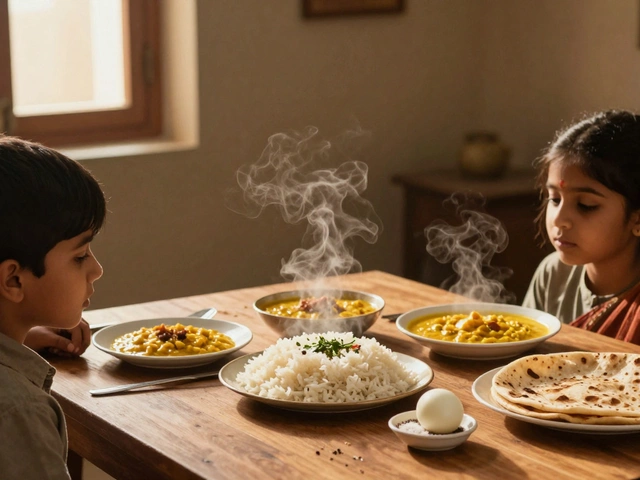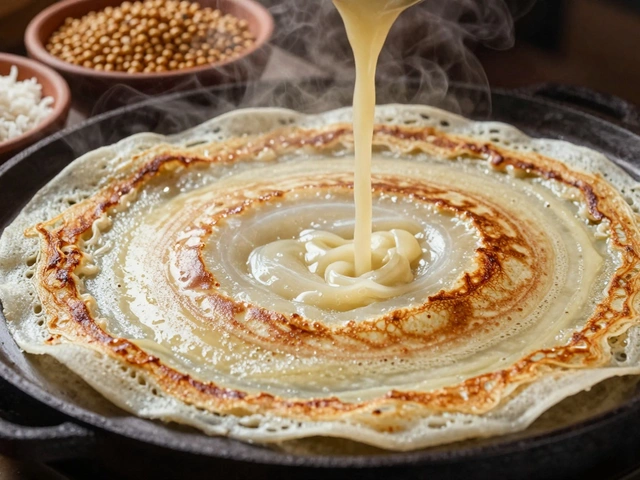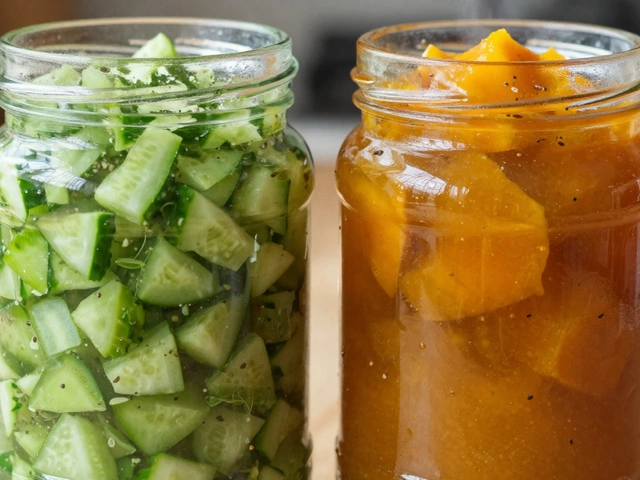Say "paneer", and eyes light up across Indian households. Some people swear by it as their go-to protein, while others fret about the fat and calories packed in every cube. The truth? It isn’t as obvious as you’d think. Paneer carries a blend of nutrients, but its impact on your health depends on how you eat it—and how much you eat. Let’s break through the health claims, the guilty pleasures, and those Insta stories of loaded paneer parathas. Where does this deliciously creamy cheese truly stand? Has it earned its superfood cape, or is it more of a guilty treat in disguise?
What’s Really Inside Paneer? A Quick Look at Nutrition
First, what is paneer, really? If you’ve ever seen someone make cheese at home by curdling milk with lemon juice or vinegar, you’ve got the basic recipe. Paneer is a fresh, non-aged cheese that’s popular not just in India but also in places like Bangladesh, Pakistan, and Nepal. The appeal? It doesn’t melt when cooked, so you can fry it, toss it in curry, stuff it into breads, or even enjoy it straight up with a sprinkle of chaat masala.
But peek beyond the taste, and paneer’s nutrition profile is interesting—especially when you’re trying to eat healthy. Here’s a real breakdown of what you’ll get from about 100 grams of plain paneer:
| Nutrient | Amount (per 100g) |
|---|---|
| Calories | Approximately 265 kcal |
| Protein | 18g |
| Fat | 20g |
| Saturated Fat | 12g |
| Carbohydrates | 1.2g |
| Calcium | 208mg |
| Vitamin A | 210mcg |
| Sodium | 22mg |
Not bad, right? The protein level is high, making paneer a solid choice for vegetarians looking for muscle repair food after a workout, or anyone who wants to feel full for longer. Calcium? Paneer’s got lots, so that’s great for bones and teeth. The vitamin A content helps with eyesight, and you’ll also get some B vitamins along for the ride. But those numbers also tell you something: there’s a lot of fat, most of it saturated. More on that in a moment.
Interesting fact: Authentic, homemade paneer (usually made from full-fat buffalo or cow milk) is softer and higher in creaminess compared to many store-bought blocks—most shops reduce the fat content for longer shelf life. So, if you’re counting calories or fat, check the label or consider making it at home for more control.
The Good Side: Paneer’s Health Benefits That Might Surprise You
You hear a lot about how paneer is protein-packed, but its perks go further. Let’s spell them out without any hype—just the good, honest science.
- High protein for vegetarians – Each 100g serving gives you almost 18g protein, more than an egg and close to many meats. If you’re athletic, growing, or just wanting to avoid mid-morning snack attacks, this is a win.
- Low in carbs – Amazing for low-carb diets or people with diabetes. That carb count is just over 1g, so you won’t spike your blood sugar with a bowl of matar paneer.
- Loads of calcium – This isn’t something you brush aside. Adults need about 1000mg calcium daily, and a regular paneer eater gets a good chunk of that sorted. Calcium from food absorbs better than most supplements, so your bones and teeth will thank you.
- Good fats—if you pay attention – Paneer’s monounsaturated fats help the heart in small quantities. Full-fat versions can increase HDL (good) cholesterol if you’re otherwise healthy.
- Lactose-friendly for some – Paneer, because it’s made fresh, is naturally lower in lactose than straight milk. Some people who get upset stomachs from milk find they can handle modest amounts of paneer. This isn’t true for everyone, though, so start small if you’re sensitive.
- Promotes satiety – That’s a science-y word for “keeps you full.” Paneer digest slowly, so if you’re always hungry, tossing some into veggie bowls, salads, or curries can really help prevent overeating later.
- Versatile for healthy recipes – Think beyond butter masala. You can grill, sauté, crumble, or stir it into salads. Use it as a substitute for ricotta in pasta, or try it in wraps and healthy sandwiches.
One fun tidbit: Some Indian wrestlers and athletes swear by a cube of paneer before training for quick, digestible energy. For young kids, paneer cubes are often the first finger foods at meals—soft enough for tiny teeth, and packed with nutrients their growing bodies need.
If you’re dieting or watching macro intake, switch to homemade paneer using skimmed or low-fat milk. It’ll bring down calories and saturated fat, without losing all the good stuff.
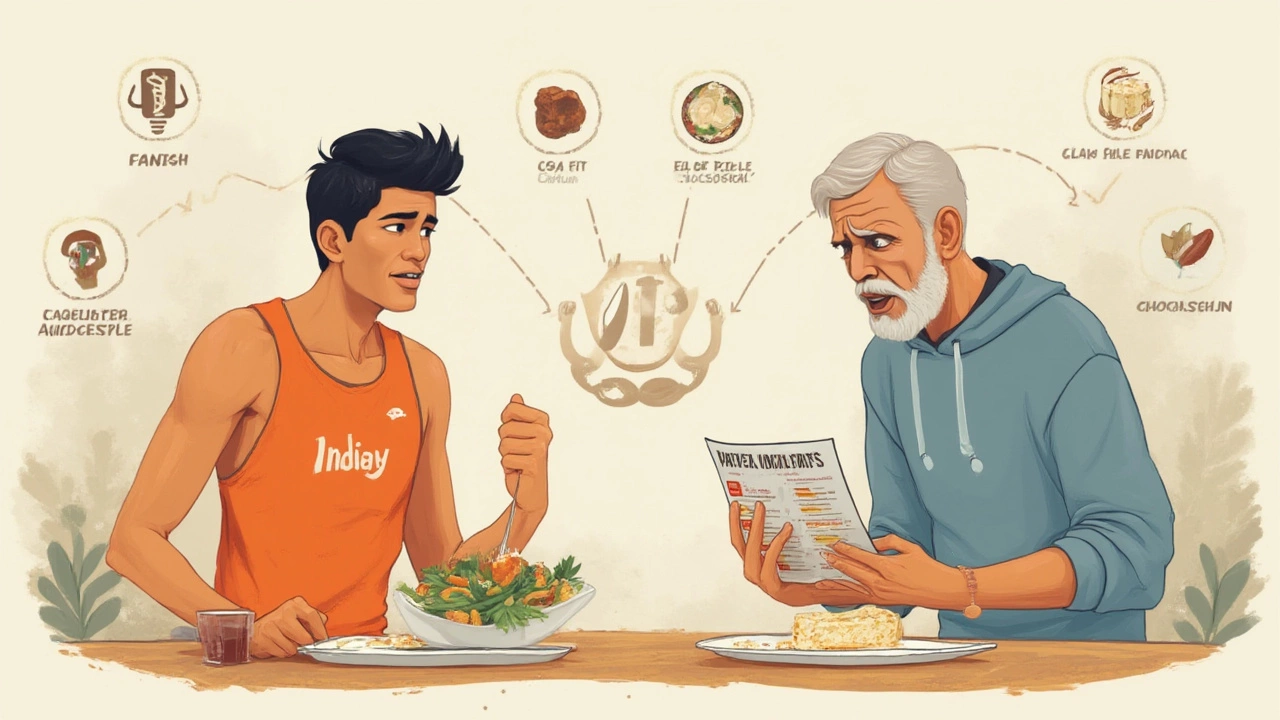
The Bad Side: What You Might Need to Watch Out For
No ingredient is perfect, and paneer isn’t an exception. Those gleaming cubes can sneak in a few health risks if you’re not careful, especially if they take over every meal. Here’s what you should look out for:
- High saturated fat and calories – One of the biggest problems. If you eat 200g in a sitting (easy to do with some restaurant gravies), that’s pushing 24g of saturated fat—a single chunk can hit half your day’s allowance. Too much saturated fat is linked to raised cholesterol, which your heart won’t thank you for.
- Difficult for lactose intolerant people – While lower in lactose, it's not zero. Sensitive folks may still have gut troubles if they overdo it.
- Risk of weight gain – Portion size is everything. Because it’s tasty and easy to eat a lot, paneer can slip extra calories into your day. Double trouble if it’s battered, deep-fried, or swimming in butter gravies.
- Store-bought sodium and preservatives – Pre-packaged paneer or processed cubes can have more salt and added stabilizers. For someone on a salt-restricted diet, this isn’t ideal. Always check labels for sodium content if you’re concerned.
- Hormonal content in milk – Unless you trust your milk source, there may be concerns about hormones or antibiotic residues (mainly in packaged milk)—these can concentrate in paneer. Opt for organic, local, or at least reputable brands when possible.
- Digestive issues for some – It’s a dairy food, so gas, bloating, or heaviness can happen if your stomach isn’t used to it, or if your gut is sensitive. Some people do better digesting curd or yogurt, where the lactose is partly broken down by bacteria.
- Risk of food poisoning – Homemade paneer needs to be stored properly. It spoils quickly outside the fridge. Infectious bacteria lurk in warm, raw dairy, so never leave paneer out at room temperature for hours. If it smells sour, toss it.
If you’re worried about calories but love paneer, try using it in dishes where veggies are the main star—think palak paneer with double spinach, or adding it in small cubes to a chana masala. You get the creamy protein with way less risk of overdoing the fat.
Another sneaky tip: If you can, get your paneer grilled or charred quickly in a non-stick pan instead of fried. Less oil, but loads of flavor. Or toss it with pepper and herbs for healthy, protein-rich snacks.
How Much Paneer Should You Really Eat?
Finding balance is the name of the game. Paneer can easily be part of a healthy diet, but moderation is your friend. Most dietitians suggest around 50-100g a day for adults if you’re eating paneer regularly, depending on your age, exercise levels, and your overall calorie intake. That’s about the size of a deck of cards—enough to jazz up a curry, but not enough to tip the scales.
The timing matters, too. Paneer at lunch keeps you full for longer, and works better for people who get sleepy after carb-heavy rice or roti meals. Try including it in breakfast wraps, sandwiches, or even in salads and see if your energy doesn’t crash as quickly in the afternoon. If you’re eating out, restaurants tend to go big on portion sizes—so share that paneer tikka platter if you’re out with friends, rather than finishing it yourself.
If you’re trying to lose weight or lower cholesterol, switch to homemade paneer from toned or double-toned milk, or eat it only a couple times a week. Mix up your protein sources—include dal, lentils, chana, eggs, or tofu. Paneer shouldn’t crowd out the other stars of an Indian vegetarian diet.
Remember, the kind of paneer matters too. Paneer from cow’s milk tends to be less fatty and lighter than buffalo milk paneer. Farm-fresh or “malai” paneer is creamier, richer, but obviously higher in calories. Choose what fits best with your body’s needs and your taste buds.
Those with a family history of heart disease or diabetes need to be more careful. If you love paneer, go for smaller portions and balance with high-fiber foods like whole wheat chapati, millets, or big leafy salads. Add some lemon juice to your paneer mix—it helps with calcium absorption, plus adds brightness to the flavor!
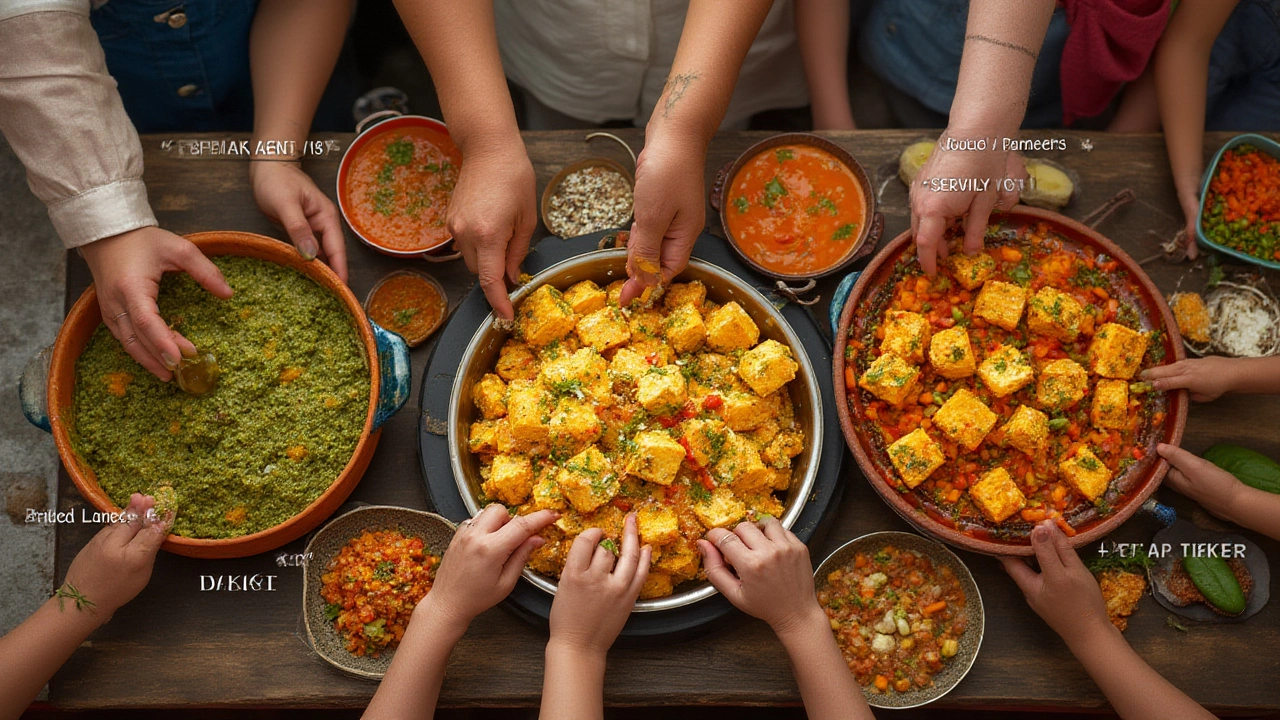
Smart Ways to Eat Paneer for Max Nutrition (And Taste!)
There isn’t one “right” way to enjoy paneer, but some choices are definitely smarter—especially if you’re chasing flavor and health at the same time. Skip oily gravies as your daily routine, and keep those rich paneer butter masalas for special nights. Your body (and tastebuds) will both thank you.
- Bake or grill your paneer with spices for a light, protein-rich snack or salad topper. Basic tandoori marinades take minutes and make for travel-friendly bites that beat dull sandwiches.
- Stir small cubes into veggie-loaded curries and dry sabzis. Spinach, tomato, peas, peppers—the options are huge and you get all the color and vitamins alongside your protein fix.
- Use crumbled paneer as a filling for stuffed parathas, multigrain wraps, or even roasted bell peppers—mix in fresh herbs, onions, coriander, and light spices for a burst of flavor without extra fat.
- Blend into thick, cooling raitas or spreads. Whip with low-fat curd, add chopped cucumber or mint, and serve as a dip or sandwich spread.
- If you’re a sweet tooth, try adding grated paneer to desserts like kheer (use less sugar) or roll up small balls with dates, nuts, and a pinch of cardamom for energy-packed bites you can actually feel good about.
- For busy mornings, prep paneer salads—cubes tossed with chickpeas, red onions, chopped cucumber, tomatoes, and a squeeze of fresh lemon.
One more game-changer: Experiment with the spice pantry. Paneer takes on any flavor you throw at it—a dash of smoked paprika, roasted cumin, or even a spoon of homemade chutney can turn a humble bowl of plain cubes into something crave-worthy and showy enough for guests. Try popping paneer into oats porridge (provides creaminess!), or on toast with avocado. When you get creative, eating healthy never feels boring.
So, is paneer good or bad for you? It can be fantastic or not-so-great, depending on how—and how much—you eat. Pay attention to your portion, what you pair it with, and how it fits into your routine, and you’ll enjoy all the best bits this tasty cheese has to offer, with none of the regrets.

